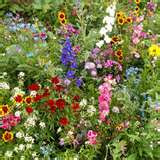Gardening and farming are dependent on insects to pollinate plants. Plants need moisture. And sunlight affects the plants growth. This symbiotic relationship between plants, nature, and pollinators is critical to the ecosystems that exist. But, according to the BBC news, “the past 100 years or so, many plants that have just used day-length have become locally extinct. Yet plants that have used temperature to control when they flower have increased their range considerably and now seem much more common. That makes a lot of sense because those plants will be able to out-compete other species in a climate change scenario”

So, with climate change, no matter how subtle, observations in the garden are more important than ever. Phenology
I am going to keep a Journal


Keeping track of the garden will be easy with pictures, and notes. Plant tags for new plantings, and dates that fertilizers were added will be documented.

Before and after photos will remind me of past projects, and the continued care for that area. Is it sunny, shady, wet, dry, and what changes have occurred in this area.
One method I have for keeping track of my garden is this plot map. This has my property dimensions, and by using tracing paper, I can draw garden beds in.

I then indicated on the site map , dots and circles to indicated plants and shrubs, and trees. Fences that border some of these areas is also marked.


As I have been a blogger for several years now, I noticed in my writing that on ‘such a date’, I mentioned Japanese Beetles. And I commented that this date was pretty early in the season. Well, imagine my surprise, when the previous year’s blog was referenced, the Japanese Beetles were actually mentioned almost 2 weeks earlier. So my observations from here on, need to be accurate. The Journal is going to be my date by date observations. Temperature by highs and lows for the day, and daylight amounts with sunrise and sunset will be recorded.
My erroneous reporting , while an embarrassment, is not the incentive to keeping a journal. Noting insects dates will help prepare for an early intervention. For example, Japanese beetles send in a few guys to set up occupancy of the garden. By knowing the date they arrived last year, I can be on the lookout, pick off the few, and the ‘pheromones’ will not be luring in the rest of the ‘clan’.

The same observations of powdery mildew can give a heads-up to applying a preventative spray.

Insects emerge when certain plants bloom. This relationship can greatly assist the gardener and farmer to be aware of the cycles, and take appropriate actions. The plants and insects emerge in the same order each year, and is not connected to the weather that occurred in the winter or spring. So the blooms of plants can accurately predict the insects that will be on the scene. Imagine if the plant, say a fruit tree bloomed, but the bees and other pollinators were not around? Nature takes these relationships very seriously, and isn't it wonderful she does?
Likewise, insects use these patterns to mate and bear young based on what the young will need to eat to survive.

My journaling is already behind a bit, since many bulbs have already broken ground, and I did not note the date. But I will move ahead, and get my camera ready to capture events as they unfold in my garden.
A feature I am looking forward to is planning outdoor events in the garden. By checking the dates of what was blooming last year, I can select a party date that will give more to the party decorations and I'll be able to show off the garden at optimal times throughout the season.
Do you keep a Garden Journal? What information do you keep?

3 comments:
Good luck with your journal. I have kept a journal for the past few years too. It's a weekly log and I make note of the weather conditions, i.e. "we had a heavy rain on Wednesday", or "several hard frosts at the beginning of the week, milder toward the weekend," the soil condition, which ranges from "parched" to "waterlogged". I also make note of what's budding, what's blooming, what I'm planting, and any wildlife activity (birds, bugs, butterflies etc.) My DH goes through at the end of each and scans it to pdf for me, so I have access to it on my computer.
Hi there Claudia:
I have kept a journal for the last 5 years. It's a bit hit and miss according to other responsibilities. I really try to keep up with the temperatures which are crazy this year in Zone 10. It seems Spring had already arrived in early Feb this year which resulted in all the Broccoli bolting almost overnight. The upside was the Hummingbirds who love those yellow flowers were everywhere. But it's OK I have plenty of Broccoli to go around.
I have kept a garden journal for about 10 years. Over the years, I have moved plants around and it helps me keep track of that. I also use it when I start seeds--I tape a seed and a picture next to the entry so I will know what both look like. Kinda like a garden scrapbook!
Post a Comment